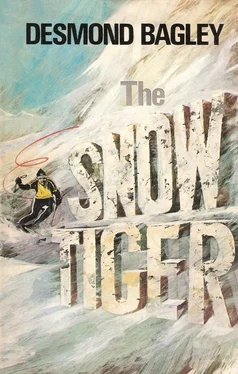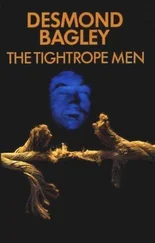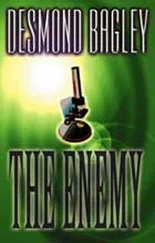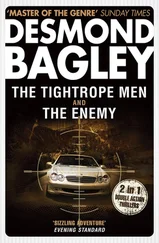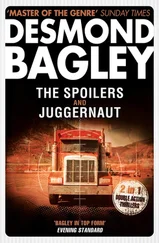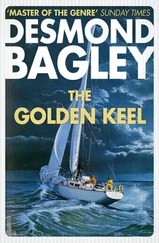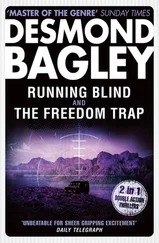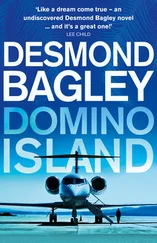‘It had its moments of drama.’ Stenning sat back in his chair and watched Ballard and Liz Peterson with curious eyes.
‘What about my brothers?’ Liz asked.
McGill filled his glass. ‘Eric’s all right,’ he said, intent on not letting the beer foam over. ‘But have you ever wondered about Charlie? If I were a psychiatrist I’d tend to diagnose paranoia.’
‘Did he make another of his big scenes?’
‘And how!’ McGill jerked his head at Ballard. ‘He threatened to dismember Ian from limb to limb if he ever meets him.’
‘Talk!’ said Liz scornfully. ‘That’s all he ever does.’
‘Maybe,’ said McGill. ‘Ian, if you and this wench are going to consort you’d better wear a blindfold. He said that if you so much as look at Liz he’ll kill you.’
Stenning broke in. ‘And was there a witness to this conversation?’
‘Just me and Eric.’
‘And he used the word “kill”?’
‘The very word.’
Stenning shook his head. Liz said, ‘I’ll have a talk with Master Charlie. He’s got to get it into his thick skull that my life is my own. This time it won’t be a plate of spaghetti that I’ll crown him with.’
‘Liz, be careful,’ warned McGill. ‘I’m getting the idea that he’s genuinely unbalanced. Even Eric thinks he’s losing his marbles. It took Eric all his time to hold him in.’
‘He’s just a big blow-hard,’ she said. ‘I’ll sort him out. But let’s not talk about the Petersons — let’s not talk at all. How’s your tennis, Ian?’
‘Not bad,’ said Ballard.
She held up her glass. ‘Bet you another of these you can’t beat me.’
‘Done,’ he said promptly.
‘Let’s go,’ she said, and stood up.
McGill turned his head and watched them as they walked towards the tennis courts with Victor trotting behind, then he turned back and grinned at Stenning. ‘Do you find our conversation stimulating, Mr Stenning?’
‘Interesting, to say the least. Miss Peterson is also interesting.’
‘An understatement typical of a lawyer.’ McGill topped up his glass. ‘Tell me — If Ian marries a Peterson, does that count in your Peterson Bashing Contest?’
Stenning moved nothing except his eyes which he slanted at McGill. ‘So he told you about that. Your question is hard to answer. I doubt if it is what Ben had in mind.’
‘But circumstances alter cases.’
Stenning said austerely, ‘That truism has no legal validity.’
Avalanche
High on the western slope and deep in the snow layer the processes of disaster were well advanced. Destructive metamorphism had long since ceased and constructive metamorphism was well under way. Air, slightly warmed from the ground, rose upwards through the snow laden with water vapour until it reached the impenetrable layer of hoar frost half way through the snow mass. Here it cooled giving up the vapour to create the tapered cup crystals.
By now the cup crystals were large and well formed, some of them being over half an inch in length.
The heavy snow-fall of the past two days had added an increased weight which, operating vertically through gravity against the cup crystals on the slope, had led to a delicately unstable position. A man may take an orange pip, hold it gently between forefinger and thumb, and squeeze ever so gently — and the orange pip will be propelled with considerable velocity. So it was on the western slope. A heavy-footed hawk alighting on the snow could provide that little extra pressure and set the cup crystals in motion.
Something like that did occur and a small slippage started. It was not very much and could have been spanned by a man with outstretched arms. The new-fallen surface snow, very cold, dry and powdery, was lifted a little by the sudden movement and a small white plume arose like a puff of smoke. But underneath chaos had begun. The fragile ice plate of the hoar layer cracked, jostling the cup crystals beneath which began to roll. The delicate bonds which held the snow together sheared, and cracks spread wide, zig-zagging at high speed from the point of original breakage. It was a chain reaction; one event followed another in lightning succession and suddenly a whole section of the snow fifty feet across slumped forward and downward, adding its weight to the untouched snow farther down the slope.
Again the inevitable action and reaction. Event followed on event even faster and presently the whole of the higher slope across a front of a hundred yards was in movement and plunging downwards.
As yet it was not moving very quickly. Five seconds after the first slippage an agile man caught in the open two hundred yards down the slope could have avoided death by running aside not very quickly. The speed of the young avalanche at this time was not much more than ten miles an hour. But the motion and the air resistance caused the light, feathery surface snow to rise and, as the speed increased, more and more of the snow powder became airborne.
The powder mixed turbulently with the air to form essentially a new substance — a gas with a density ten times that of air. This gas, tugged down the slope by the force of gravity, was not checked very much by friction against the ground, unlike the snow in the main avalanche. The gas cloud picked up speed and moved ahead of the main slide. Twenty seconds after the first slippage it was moving at fifty miles an hour, hammering gustily at the snow slope and smashing the delicate balance of forces that held the snow in place.
This was a self-energizing process. More snow was whirled aloft to increase the gas cloud and the avalanche, no longer an infant but lustily growing, fed hungrily on the snow lower down the slope. Already the whole of the upper slope was boiling and seething across a front of four hundred yards, and clouds of snow rose like the thunderheads of a hot summer’s day, but incredibly faster.
The avalanche cloud poured down the mountainside even more quickly. At seventy miles an hour it began to pull into itself the surrounding air, thus increasing its volume. Growing thus, it again increased its speed. At a hundred miles an hour the turbulence in its entrails was causing momentary blasts of two hundred miles an hour. At a hundred and thirty miles an hour miniature tornadoes began to form along its edges where it entrained the ambient air; these whirlwinds had internal velocities of more than three hundred miles an hour.
By this time the mature avalanche was encountering air resistance problems. It was moving so fast that the air in front did not have time to get out of the way. The air was compressed and this caused its temperature to rise sharply. Pushed by the heavy avalanche cloud, an air blast began to develop in front of the rapidly moving snow, a travelling shock wave which could destroy a building as effectively as a bomb.
Now fully grown, the avalanche rumbled in its guts like a flatulent giant. A million tons of snow and a hundred thousand tons of air were on the move, plunging down towards the mists at the bottom of the valley. By the time the mist was reached the avalanche was moving at over two hundred miles an hour with much greater internal gusting. The air blast hit the mist and squirted it aside violently to reveal, only momentarily, a few buildings. A fraction of a second later the main body of the avalanche hit the valley bottom.
The white death had come to Hukahoronui.
Dr Robert Scott regarded Harold Dobbs with a professionally clinical eye. Dobbs looked a mess. Apparently he had not shaved for a couple of days and the stubble was dirtily grey on his cheeks and chin. His eyes were bloodshot and red-rimmed and he sullenly refused to meet Scott’s gaze. His fingers twitched jerkily in his lap as he sat in the armchair, his face averted.
Читать дальше
Конец ознакомительного отрывка
Купить книгу
